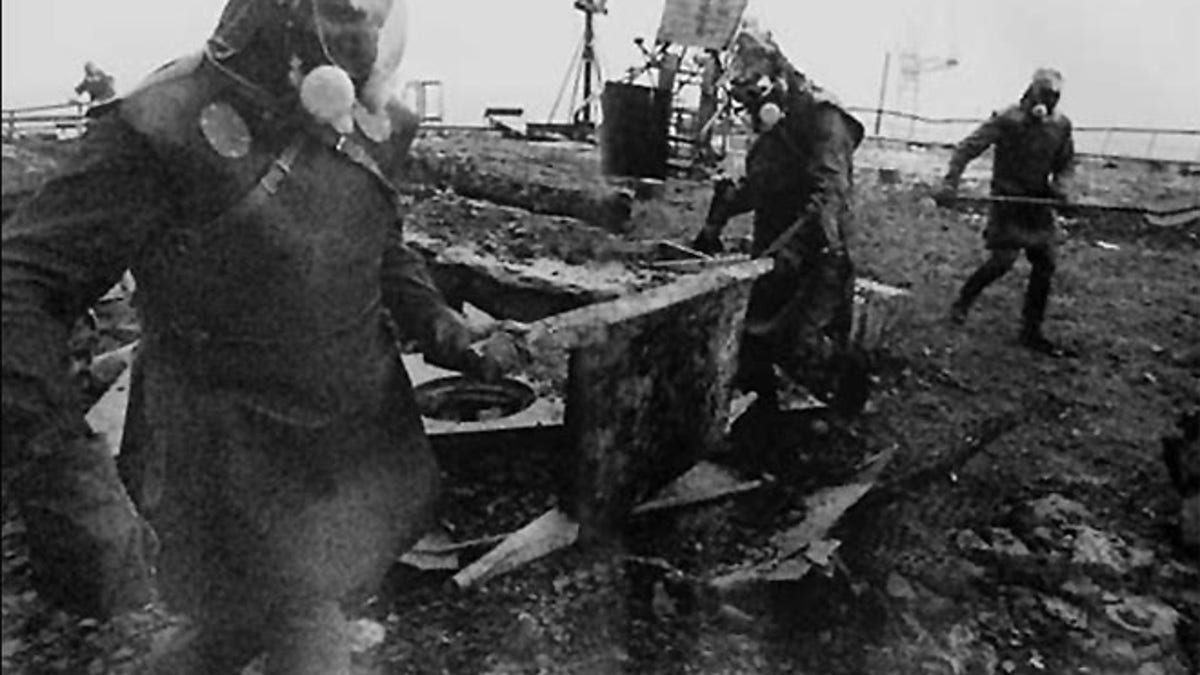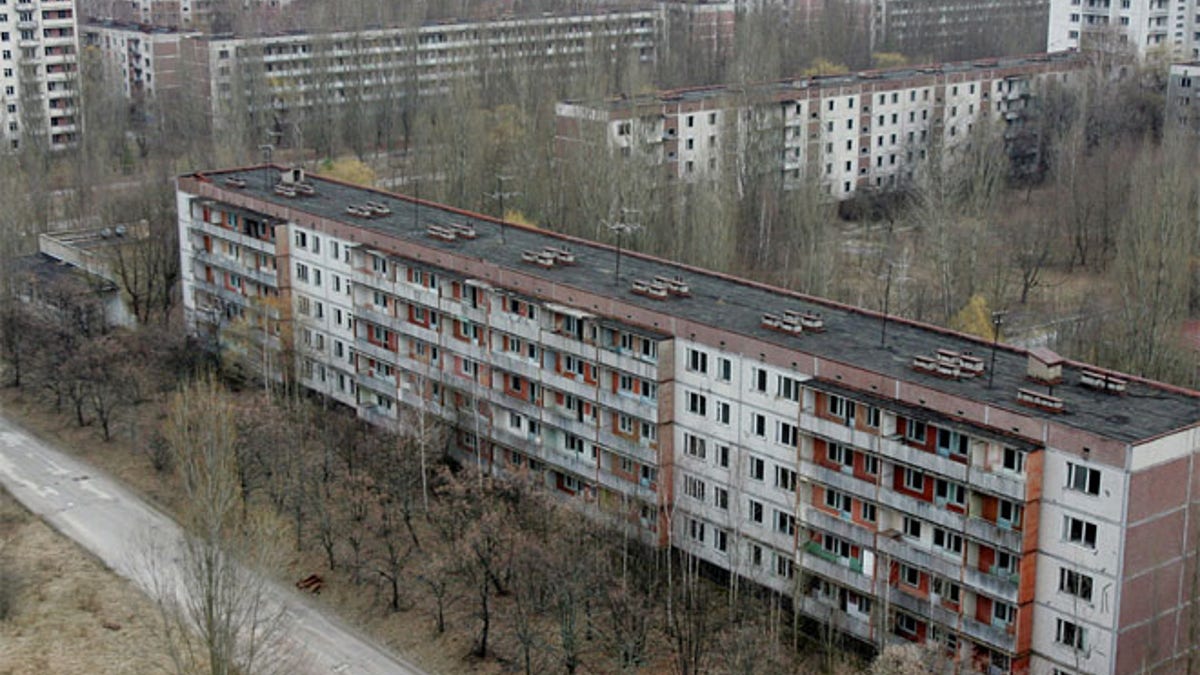
The disaster 30 years ago is the worst nuclear catastrophe on record. (Reuters)
Yury flopped open a mini-date log and pointed to the notations that marked each helicopter trip he took over the still-smoldering Chernobyl nuclear power plant after reactor No. 4 exploded 30 years ago, heaving tons of uranium, cesium, plutonium and other radioactive poisons three miles into the atmosphere.
In the weeks following the disaster, the Soviet powers ordered Yury, a Russian video journalist, to film aerial scenes of the crippled Ukrainian facility. Again and again in the wake of the nuclear nightmare, Yury and his chopper pilots hovered eerily over the molten mess. Each flight memorialized numerically in Russian - ‘Odin, dva, tri, chetire, pyat’ – signified a trip into the abyss.
“After those flights, my hair started to fall out,” Yury recounted in English back in 1991, as he drove our U.S. humanitarian team to Chernobyl’s 18-mile Exclusion Zone. “At first I thought it was from a lack of eating vegetables.”
Almost five years after the world’s worst nuclear catastrophe, and our Jeep lurched and bumped over ruts, kicking up billows of dust. Compared to the reactor's sickening cloud of smoke and radionuclides Yury had witnessed, the airborne debris seemed trivial.

Even 30 years later, the once thriving city is eerily destered, and unsafe. (Reuters)
A quarter-century after I became one of the first Western journalists to venture into the Exclusion Zone, it is time that I reveal the secret that I held for decades, one that so clearly haunted Yury on that day.
After showing us his Chernobyl flight record, Yury stared at the Jeep’s steering wheel before continuing to recount the events of five years earlier. On the very Saturday the reactor exploded, Yury was videotaping a family not far from the doomed power plant. Springtime flowers and the squealing laughter of children masked the hidden reality of invisible chemicals wafting in the breeze and swirling into streams. Deadly atoms gripped trees, grass and shoes. Ionizing particles floated inside nostrils and lungs.
As Yury’s camera rolled, firefighters and first responders were racing in vain to dampen the roaring reactor where a nuclear blast had already blown a 1,000-ton lid off the container holding the reactor’s fuel elements. And no one told the public of the out-of-control monster fanning a lethal plume northward across Belarus and countries beyond.

Questions remain about what Soviet leaders, including Mikhail Gorbachev, knew and when they knew it. (Reuters)
Soviet Union leader Mikhail Gorbachev and other members of the Politburo had learned there was a problem hours earlier, around 3 a.m. Seeds of a global cover-up took root overnight. What Soviet commanders knew and when they knew it is still debated, but it was another 36 hours before residents of Pripyat, the power plant’s surrounding “atom town” received first official details of the meltdown.
“Attention comrades, an unsatisfactory radioactive situation has occurred at the Chernobyl power station,” read the warning broadcasted to residents. “As a temporary precaution, it has been decided to evacuate citizens of Pripyat.”
Three hours later, with the aid of 1,200 buses from Kiev, the community of roughly 45,000 turned eerily empty.
Somewhere in the panic and precaution, Soviet authorities learned of Yury’s idyllic spring day video. Moscow aired clips on state television, offering a distorted truth of the clear landscape and jovial people into a half-truth for the world to see. April 26 was a bright, sunny day, with local children giggling and romping, adults toasting and feasting, went the story given credence by Yury’s footage. All was well for USSR citizens.
But Yuri knew the truth.
“The government used my video to say that “Nyet, nyet, nyet, the Chernobyl plant is fine,” he told me. “Everything is fine. That video, it . . . it. . . how you say? It is a black spot on my heart. A black spot on my whole life.”
The civil authorities turned an innocent party into international propaganda. If Sweden hadn’t sounded the alarm three days after the initial devastation, how might Moscow have remained tight-lipped? As it was, authorities held back on the full effects of the radiation contamination for years. Children splashed in streams, women gathered mushrooms in the forests and men tilled their farmland far too close to Chernobyl.
The calculated downplaying of the Chernobyl disaster cracked open in October 1990, when the minister for foreign affairs of what is now known as Belarus, Pyotr Kravchanka, addressed the United Nations General Assembly and appealed for help.
“The bitter truth is that it is only now, four and a half years later, that we are finally and with tremendous difficulty making a breach in the wall of indifference, silence and lack of sympathy, and for this we ourselves are largely to blame,” Kravchanka said.
I sensed the country’s suffocating unease as Yury drove us to the Zone’s checkpoint and armed communist guards herded us into an outdated bus to tour a number of desolate evacuated villages. At one point we ventured within four miles of the mangled energy plant and our cell phone-sized dosimeter soared to indicate dangerous radiation levels—10 times higher than what is considered safe.
I can still hear the haunting creak of dilapidated playground swings and picture dirt-swept toys and dolls long abandoned in schoolrooms. Drawing close to Chernobyl’s Ground Zero, we met an elderly couple outside their farmhouse.
“Why are you still here in this contamination?” I asked. The wife pointed to the sky and scolded me through our interpreter, “Nyet! Nyet! Nyet! We see nothing in the air!”
An accurate tally of the ill and dead from Chernobyl may never be known—estimates still range from hundreds to hundreds of thousands.
Thirty years ago in a Cold War culture, Yury did not know Moscow would manipulate his family-time video. He did not know the danger he confronted in the following days and weeks when he was pressed into duty videotaping the plant. Was Yury an unknowing pawn on a convoluted global chessboard or merely a dedicated family man just doing his job? He was both.
A quarter century after we spoke in that chilly Jeep, I still wonder if Yury was attempting to alert the outside world through me. And I wonder if he is even alive. Of the first photographers who snapped photos or recorded video on the ground and in the air that fateful Saturday, two are dead from radiation-related disease and one was constantly ill from the Chernobyl exposure for years before dying in a 2015 car accident.
After my discussion with Yury, I reported on the relief effort, accompanying a New York-based group that brought three tons of medicine and supplies to Belarus hospitals and orphanges.
Our host, the Byelorussian Children’s Fund, escorted us throughout the troubled country where more than half of the unseen Chernobyl toxins showered unsuspecting citizens with a blanket of potential disease and death. I grasped the hand of a dying teen and cradled babies nobody wanted.
The sight of dozens of hairless, chemo-sick boys and girls remains burned into my mind’s eye. I told their story, but until now, I did not tell Yury’s. Maybe doing so will help soften the “black spot” he once described to me.




















